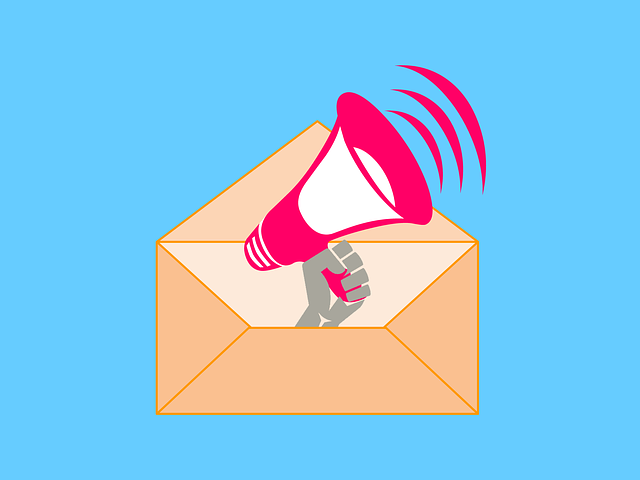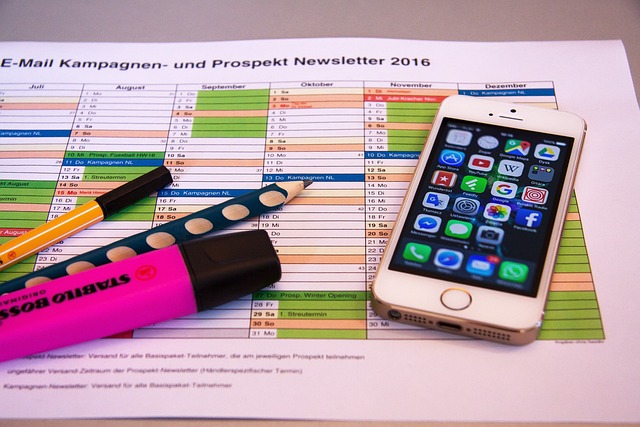Are you a creative professional looking to maximize the impact of your email marketing campaigns?
Imagine this scenario: you spend hours crafting a visually stunning email, carefully selecting the perfect images and crafting compelling copy. You press send, eagerly anticipating the flood of responses. But days pass, and your inbox remains eerily quiet. What went wrong?
This is where A/B testing comes in. A/B testing, also known as split testing, allows you to scientifically analyze the effectiveness of different elements in your email campaigns. By creating variations of your emails and sending them to different segments of your audience, you can measure which version performs better in terms of open rates, click-through rates, and conversions.
For creative professionals, A/B testing is essential because it provides concrete data to guide your decision-making process. Instead of relying on guesswork or personal preferences, you can leverage data to optimize your email campaigns and drive better results.
In this article, we will explore the importance of A/B testing in email marketing for creative professionals, and how it can help you achieve your goals. Get ready to take your email marketing to the next level!
Key Takeaways
- A/B testing provides concrete data to guide decision-making in email marketing.
- A/B testing helps optimize email campaigns and drive better results.
- Design elements like layouts, color schemes, and fonts should be experimented with to determine audience preferences.
- Implementing changes based on A/B test results is crucial for optimizing email marketing strategy.
Understand the Basics of A/B Testing in Email Marketing
Now, let’s dive into the nitty-gritty of A/B testing in email marketing so you can master the basics and boost your creative professional career! A/B testing benefits creative professionals by providing valuable insights into what resonates with their audience.
By testing different email variables, such as subject lines, content, or CTAs, you can gather data on what drives higher open rates, click-through rates, and conversions. This data-driven approach allows you to make informed decisions and optimize your email campaigns for better results.
To ensure accurate results, it’s important to follow A/B testing best practices, such as testing one element at a time, using a large enough sample size, and randomizing your test groups.
By understanding the basics of A/B testing, you can effectively determine your testing objectives and continue to refine your email marketing strategies.
Determine Your Testing Objectives
First, identify your desired outcome and set your sights on the bullseye of your testing objectives. Setting realistic goals is crucial in determining what you want to achieve with your A/B testing in email marketing. By measuring key performance indicators (KPIs), you can track the success of your tests and make data-driven decisions. To help you better understand the importance of setting testing objectives, consider the following table:
| Objective | Key Performance Indicator |
|---|---|
| Increase open rate | Open rate |
| Improve click-through rate | Click-through rate |
| Boost conversion rate | Conversion rate |
By setting clear objectives and measuring relevant KPIs, you can effectively evaluate the performance of your email campaigns. Once you have determined your testing objectives, you can move on to the next step of creating variations of your email campaigns.
Create Variations of Your Email Campaigns
To create variations of your email campaigns, imagine different scenarios and tailor your content accordingly. This will allow you to connect with your audience on a more personal level. Effective design plays a crucial role in capturing your audience’s attention and encouraging them to engage with your email. Experiment with different layouts, color schemes, and fonts to determine what resonates best with your target audience.
Additionally, personalized content is key to driving conversions. Use data-driven insights to understand your audience’s preferences and behaviors. Then, customize your email content based on that information. Incorporate their names, past purchase history, or browsing behavior to create a sense of personalization.
By creating variations that take into account both effective design and personalized content, you can optimize your email campaigns for better results.
Transitioning into the next section, it is now time to split your audience and send out the test emails.
Split Your Audience and Send Out the Test Emails
Once you’ve crafted your variations and added a touch of personalization, it’s time to split your audience and unleash the test emails. Captivate your subscribers with an irresistible allure.
Audience segmentation is crucial to ensure accurate testing results. By dividing your audience into smaller, distinct groups based on demographics, preferences, or past interactions, you can tailor your email campaigns to specific segments and accurately measure their effectiveness. This allows you to gather data-driven insights and make informed decisions about which version of your email performs better.
Testing accuracy is vital to the success of your email marketing efforts. It helps you understand what resonates with your subscribers and allows you to optimize future campaigns accordingly. Once you’ve analyzed the results and identified the winning version, you can move on to the next step of refining your email marketing strategy.
Analyze the Results and Identify the Winning Version
After analyzing the results and identifying the winning version, you can gain valuable insights that will help optimize your future email campaigns and drive better engagement with your subscribers.
The data you collect during A/B testing provides quantitative evidence of what works and what doesn’t, allowing you to make informed decisions based on real evidence rather than assumptions.
To optimize your email marketing efforts, consider the following strategies:
-
Analyzing data: Dive deep into the metrics and analyze open rates, click-through rates, and conversion rates for each variation. Look for patterns and trends that can inform your future campaigns.
-
Optimization strategies: Use the insights gained from the A/B test to refine your email content, subject lines, CTAs, and overall design. Test different elements and combinations to find the most effective approach.
-
Implement the findings and continuously improve your email campaigns: Apply the lessons learned from the winning version to future emails. Iterate and experiment with new ideas to stay ahead of the competition and keep your subscribers engaged.
By following these steps, you can take full advantage of A/B testing in email marketing and continuously improve your campaigns to drive better results.
Implement the Findings and Continuously Improve Your Email Campaigns
Now that you’ve identified the winning version, it’s time to implement the findings and continuously improve your email campaigns for better engagement and results.
Implementing changes based on A/B test results is crucial for optimizing your email marketing strategy. Take the winning version and make the necessary adjustments to your email templates, subject lines, and call-to-action buttons. By doing this, you can capitalize on what resonates best with your audience and increase the chances of driving conversions.
Additionally, tracking and measuring email campaign performance is essential to gauge the effectiveness of your changes. Use analytics tools to monitor open rates, click-through rates, and conversion rates. This data-driven approach allows you to make informed decisions and further refine your email campaigns for maximum impact.
Frequently Asked Questions
How can I ensure that the results of my A/B testing are statistically significant?
To ensure statistically significant results in your A/B testing, it’s crucial to interpret the data accurately. Start by determining the sample size needed for statistical validity.
Use a reliable statistical significance calculator to analyze your results and avoid drawing conclusions based on small sample sizes.
Additionally, consider conducting A/B tests for a longer duration to account for any variations in user behavior.
By following these tips, you can effectively conduct A/B testing in email marketing and make data-driven decisions.
What are some common mistakes to avoid when creating variations of email campaigns for A/B testing?
When creating variations of email campaigns for A/B testing, there are common mistakes to avoid.
First, ensure that your variations are significantly different to gather meaningful data.
Second, avoid testing too many elements at once, as it can make analysis challenging.
Third, don’t overlook the importance of a large enough sample size for accurate results.
Finally, make sure you have a clear objective and hypothesis for each test.
Following these best practices will help you make data-driven decisions and optimize your email marketing campaigns.
Is it necessary to split the audience evenly when sending out test emails?
Splitting audiences unevenly when sending out test emails is not recommended. It is crucial to have a balanced representation of your audience in order to obtain accurate and reliable results. By evenly dividing your subscribers into test groups, you ensure that any differences in response rates can be attributed to the variations being tested, rather than other factors. This balanced approach allows for a more accurate analysis of A/B test results, enabling you to make data-driven decisions and optimize your email campaigns effectively.
Are there any specific metrics that I should focus on when analyzing the results of my A/B tests?
When analyzing the results of your A/B tests, it’s crucial to focus on specific metrics that provide valuable insights.
Look at metrics such as open rates, click-through rates, conversion rates, and revenue generated. By analyzing these metrics, you can determine which version of your email performs better and make data-driven decisions to improve your email marketing campaigns.
This analytical approach will help you optimize your email content and design for maximum effectiveness and engagement.
How frequently should I conduct A/B testing in my email marketing campaigns to continuously improve my results?
To continuously improve your email marketing results, it’s crucial to conduct A/B testing frequently. By doing so, you can track and measure the success of your tests, allowing you to make data-driven decisions.
To start, ensure you have a clear objective and specific metrics in mind. Segmenting your audience is another best practice for A/B testing, as it allows you to target specific groups and analyze their response.
By regularly testing and analyzing, you can optimize your campaigns and drive better results.
Conclusion
In conclusion, you’ve learned the importance of A/B testing in email marketing for creative professionals. By understanding the basics of A/B testing and determining your objectives, you can create variations of your email campaigns and split your audience to send out test emails.
Analyzing the results will help you identify the winning version, allowing you to implement the findings and continuously improve your email campaigns. This data-driven approach will enable you to optimize your email marketing strategies and achieve better results.
Coincidentally, by embracing A/B testing, you’ll unlock the hidden potential of your creative prowess and connect with your audience in a more meaningful way. So, don’t overlook the power of A/B testing and let your creativity shine through your email campaigns.









